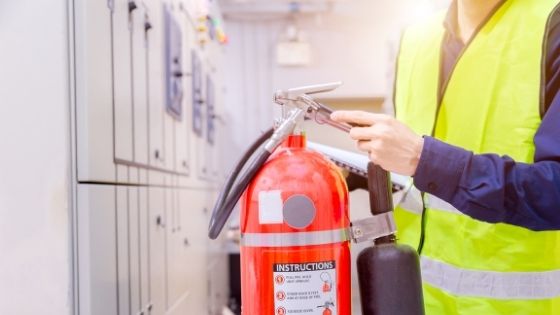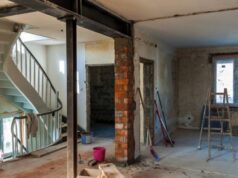A commercial building is vulnerable to several safety hazards. To ensure optimal building safety by effectively preventing these hazards, building owners often appoint building service contractors.
Amongst all the hazards that can jeopardize the structural integrity and harm the occupants, fire is the most perilous. Moreover, each business undertaking presents unique fire risks, making fire safety a prerequisite for every commercial building.


Therefore, it is necessary for building service contractors to focus extensively on fire safety and maintain robust fire protection systems in their buildings.
In this ultimate guide by fire protection London experts, we have covered all the necessary details that building managers need to know about passive fire safety in commercial buildings.
What Is Fire Stopping?
Fire protection systems involve equipping residential and commercial buildings with fire-stopping products that prevent the passage of flames, smoke, and toxic gases and allow a safe evacuation of the occupants.
After a detailed inspection by a passive organization specializing in passive fire protection survey in Kent, the building will be divided into fire compartments. These compartments are designed to act as a barrier and confine the fire to its ignition zone.
Furthermore, these compartments are appropriately sealed with passive firestopping products such as fire doors, windows, cavity barriers, etc.
Combined, these components minimize the property damage and allow safe evacuation for the occupants.
Let us now have a look at the significant components of passive fire protection in detail.
Components Of Passive Fire Protection
Fire Stopping Doors-Sets
Fire door sets are fire-resistance sets that include door frames, doors, leaves, and other door hardware. When these doors are shut, they serve as a deterrent between compartments, preventing the spread of smoke and fire from spreading to other parts of the building.
Fire Ducts
Fire-rated ductworks are crucial elements of the fire safety system in buildings, primarily commercial and industrial buildings. These fire protection components can be distinguished into two main types: smoke extraction ductworks and ventilation ductwork.
The smoke ductwork allows effective smoke disposal in case of fire hazards, and the ventilation ducts facilitate better compartmentalization.
Fire-Resisting Walls & Ceilings
These are the essential passive fire-stopping elements. Firewalls and ceilings play a colossal role in compartmentalizing the fire and preventing excessive loss of property.
The horizontal spread of fire is slowed by the walls, while the ceiling and floors act as barriers between floors and prolong the vertical movement of fire.
Retardant Paints and Coatings
Fire resilient walls and ceilings with retardant coatings/paints are the oldest and most successful way to prevent flammable materials like wood and steel from fire damage.
These coatings provide excellent fire protection, minimizing the loss of life while saving your property from detrimental fire damage.
Importance Of Passive Fire Protection
24/7 fire safety
A passive fire protection system is installed in the building from the very beginning. These elements actively curbs the fire from spreading without any manual or automatic intervention.
Therefore, even when the building is vacant, these systems can actively protect the property by allowing fire professionals to act timely while avoiding excessive damage that leads to costly repairs.
Keeps the Building Compliant
One of the significant responsibilities of building service contractors is to keep the building compliant with the latest safety standards. Non-compliance with fire safety can leave a negative impression on potential clients and attract legal fees.
Building contractors can avoid getting caught up in fire-compliance issues by installing adequate fire protection systems and conducting regular inspections. Ultimately, this will protect the business’s reputation and ward off legal liabilities.
Insurance Compliance
Apart from legal compliance, fire protection measures also ensure compliance with insurance company’s regulations.
Suppose your building is not compliant with the fire safety standard determined by the insurance company. In that case, they can deny the claim after an accident or refuse acceptance of insurance in the first place.
Prevents Smoke Inhalation
Since passive fire protection minimizes fire spread and allows quick stopping, it also reduces smoke output.
Even if the fire spreads beyond the point of ignition, passive components such as fire curtains, windows, and doors compartmentalize the smoke, allowing residents to safely evacuate without inhaling the hazardous compounds in the smoke.
Conclusion
A building service contractor has to anticipate all the fire risks in advance and prevent them with adequate planning of passive fire protection.
For high-standard fire safety systems, contact a trusted Passive fire protection London company today! The expert team of fire suppression professionals will help you assess the fire risks of your property and aid you in the installation and maintenance of these products.









